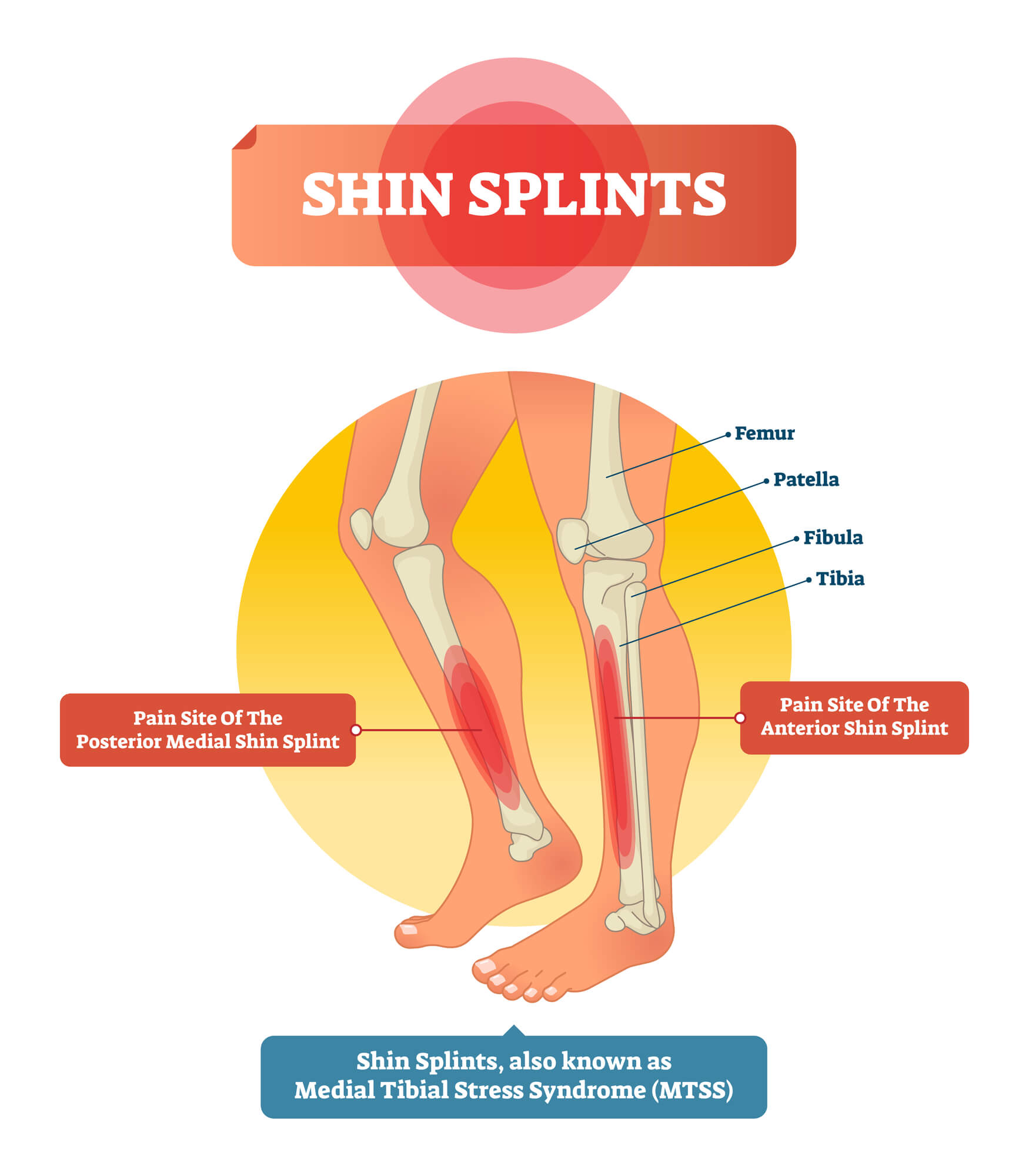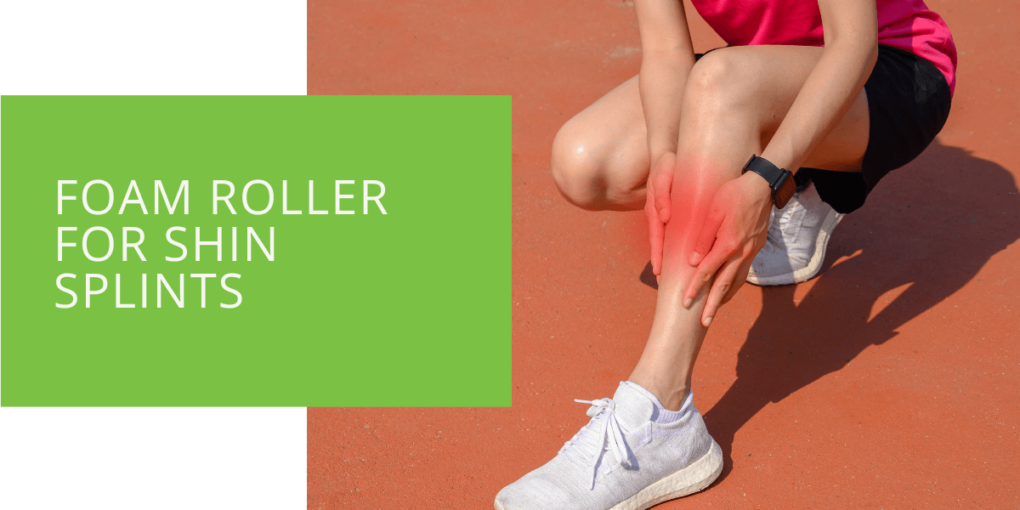Foam Roller for Shin Splints: A Comprehensive Guide
Shin splints can be a nagging issue for many athletes and active individuals. The pain along the shin bone, caused by repetitive overuse, can damper your fitness journey. Fortunately, there's an effective and accessible solution - the foam roller. In this article, we'll delve into foam rolling to treat and prevent shin splints, providing a step-by-step guide, expert advice, and practical exercises to relieve the discomfort.
Key Takeaways
- Foam rolling can effectively treat and prevent shin splints by targeting affected muscles, improving circulation, and reducing inflammation.
- Proper techniques and selecting the right foam roller are crucial for success, with expert guidance from ePodiatrists to ensure optimal results.
- Combining foam rolling with strengthening exercises, proper footwear, and gradual progression in activities can help maintain an active, pain-free lifestyle while preventing shin splints.
Understanding Shin Splints
What are Shin Splints?
Shin splints, medically known as medial tibial stress syndrome (MTSS), are characterized by pain along the shinbone (tibia). They often result from repetitive activities such as running, which cause strain on the shin muscles.
Causes of Shin Splints
Shin splints can occur due to various factors, including overuse, poor footwear, flat feet, and muscle imbalances. Understanding these causes is crucial to effective treatment and prevention.
Symptoms of Shin Splints
Identifying the symptoms early is essential. Common signs include pain along the inner edge of the shin bone, especially during and after exercise, and tenderness along the lower leg.
The Role of Foam Rolling
How Foam Rolling Can Help Shin Splints
Foam rolling is a self-myofascial release technique that uses a foam roller to massage and stretch muscles. It can alleviate shin splint pain by targeting the affected muscles, improving circulation, and reducing inflammation.
Benefits of Using a Foam Roller
Using a foam roller offers several advantages, such as increased flexibility, reduced muscle soreness, and improved muscle function. Incorporating foam rolling into your routine can lead to better overall performance.
Science Behind Foam Rolling for Shin Splints
Understanding the science behind foam rolling helps you grasp its effectiveness. It primarily works by breaking down adhesions in the fascia, the connective tissue surrounding muscles, improving muscle function and reducing pain.
Choosing the Right Foam Roller
Types of Foam Rollers
Foam rollers come in various shapes and densities. We'll explore the different types and help you choose the one best suited for your needs.
Factors to Consider When Selecting a Foam Roller
Consider your body type, fitness level, and specific requirements when picking a foam roller. The right choice can make a significant difference in your foam rolling experience.
Recommendations for Podiatry Patients
As experts in podiatry, we'll guide on selecting a foam roller that complements your treatment for shin splints.
Proper Techniques for Foam Rolling
Preparing for Foam Rolling
Before diving into foam rolling, preparing your body and understanding the proper techniques is crucial. We'll walk you through the essential steps.
Step-by-Step Guide to Foam Rolling for Shin Splints
Discover a detailed guide on using a foam roller to target the muscles associated with shin splints. We'll cover the tibialis anterior, calf muscles, and more.
Common Mistakes to Avoid
Avoiding common mistakes ensures you get the most out of your foam rolling routine. Learn what not to do to prevent injury and maximize benefits.
Shin Splint Exercises
Additional Exercises to Complement Foam Rolling
While foam rolling is highly effective, combining it with specific strengthening and stretching exercises can further enhance your recovery and prevention efforts.
Strengthening and Stretching Exercises
Explore exercises that target the muscles around your shin, calf, and ankle to prevent future shin splints.
Creating a Comprehensive Workout Routine
We'll help you design a well-rounded workout routine integrating foam rolling and shin splint management and prevention exercises.

Preventing Shin Splints
Tips for Preventing Shin Splints
Prevention is always better than treatment. Discover practical tips and advice to keep shin splints at bay and maintain your active lifestyle.
The Role of Proper Footwear
Footwear plays a significant role in preventing shin splints. Learn to choose the right shoes for your specific activity and foot type.
Importance of Gradual Progression in Activities
Avoid overuse injuries by gradually increasing your activity level. We'll explain the importance of pacing yourself and avoiding sudden spikes in intensity.
Foam Roller vs. Other Treatments
Comparing Foam Rolling to Other Shin Splint Treatments
Explore how foam rolling stacks up against other treatment options, including rest, ice, and medication. Weigh the pros and cons to make an informed decision.
When to Consult a Podiatrist
While foam rolling can be incredibly beneficial, some may require professional intervention. We'll discuss when it's time to seek the expertise of a podiatrist.
Combining Multiple Treatments for Optimal Results
Sometimes, a multifaceted approach to shin splint treatment may be necessary. Learn how to combine various treatments for the best outcomes.
Conclusion
Shin splints don't have to sideline your active lifestyle. With the right knowledge and techniques, using a foam roller, you can effectively treat and prevent shin splints. At ePodiatrists, we're committed to helping you stay on your feet and remain active. Start your journey to shin splint relief today by incorporating foam rolling into your routine. Don't let shin splint pain hold you back—schedule an appointment with us for personalized guidance and expert podiatric care.
Remember, your journey to pain-free shins begins with that first foam roll. Take that step today!

